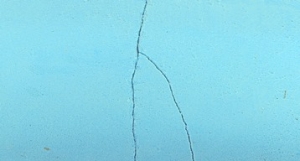 The average in-ground residential pool in the United States contains about 20,000 gallons of water. Given that volume, leakage from a pool may be subtle and hard to detect. Tracing it to its source can be even more difficult. Leaks in the concrete shell of the pool often require high-tech leak detection methods such as underwater listening devices and/or dye testing. Fortunately, the majority of pool leaks occur outside the pool and above-ground in the plumbing and pump/filter circuit. Answering some simple troubleshooting questions can identify these most common and easily repaired sources of leakage.
The average in-ground residential pool in the United States contains about 20,000 gallons of water. Given that volume, leakage from a pool may be subtle and hard to detect. Tracing it to its source can be even more difficult. Leaks in the concrete shell of the pool often require high-tech leak detection methods such as underwater listening devices and/or dye testing. Fortunately, the majority of pool leaks occur outside the pool and above-ground in the plumbing and pump/filter circuit. Answering some simple troubleshooting questions can identify these most common and easily repaired sources of leakage.
Is Water Loss Always A Leak?
A sudden drop in the pool water level may not necessarily be the result of a leak. Evaporation rates from a pool can vary widely with changes in air temperature, relative humidity and wind speed. A simple test can rule out evaporation as a source of water loss in your pool. Fill a bucket with water and mark the level of water in the bucket and the water level in the pool. Place the bucket beside the pool and compare the two water levels 24 hours later. If the water level in the pool has dropped more than the level in the bucket, you probably have a leak.
Is Leakage Greater When The Pump Is Circulating?
Leakage that is greater when the pump is circulating may be a sign of a leak in the return plumbing downstream from the pump, known as the pressure side of the system. After the pump is pressurized, leaks ranging from minor seepage to high-pressure sprays may develop in the any of the downstream plumbing fittings when the pump is running. Internal leaks may also occur in a defective filter multiport valve, causing the loss of clean water down the waste or backwash line into the sewer.
Is Leakage Greater When The Pump Is Off?
While the pump is running, leaks in pipes, fittings or valves on the suction side of the system before the pump usually draw air in rather than leak water out. When the pump cycles off, however, water leakage may occur through these openings. Air locks in the pump that require frequent manual priming, bubbles emitted from the return jets in the pool and high-pressure readings in the filter that are relieved by opening the bleed valve are all signs that a leak somewhere before the pump is sucking air in while the pump is energized and probably leaking water out when the pump stops.
Does The Pool Leak Whether The Pump Is Running Or Not?
This tends to indicate a leak somewhere in the shell of the pool. However, it need not necessarily be a crack or other structural defect. If water loss continues only to a certain level and then subsides, check the water-tightness of any fixtures installed at that level such as underwater lights. Another common source of water loss may be suspected if the water level drops just below the level of the skimmers, then stabilizes. The joint between the plastic skimmer boxes and the concrete pool very frequently separates and allows leakage.
Original Artical at https://homeguides.sfgate.com/check-plumbing-leaks-swimming-pool-63058.html

Leave a Reply
Want to join the discussion?Feel free to contribute!